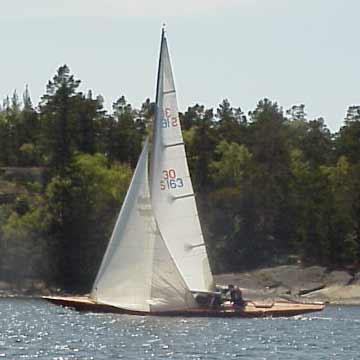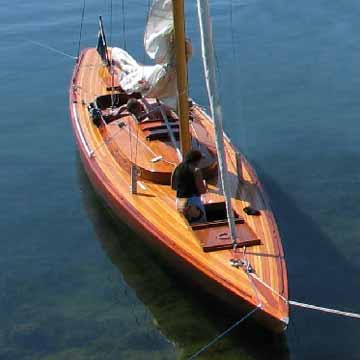Old yachts never die, they only go faster.
There came a mail from the opposite side of the globe. Isn't it marvellous how the lines of a Square metre yacht fascinates people, and makes them spend time and money to save pieces of nautical history.
Here is a part of the mail from Dave Wagner. He is from New Zealand, but spends most of his time as a professional sailor in big yachts on the great oceans.
"A little history of the boat from my end, I was in the Seychelles 5 months ago and up on the hard at the local yacht club was where I first saw a 30 Sqm. She was just sat there and upon asking a few people I found out that the yacht club had been donated it and were going to scrap it for the lead in the keel and sell the mast to a fisherman. I felt it was such a shame to see something with such lovely lines destroyed and felt she deserved to sail again. I must of walked past and stopped and looked at her 20 times before I decided to try and get her. So I offered the yacht club the same as they were going to get for selling it and I now own a 30. The logistical problems are I still have to ship her back to New Zealand as that's where I am from. Well that's about it."
Some facts about the yacht: Kungsörs Batvarv was (it still exists, but they are not making new boats any more) one of the most well known yacht yards for wooden boats in Sweden. It was known for good quality and professional handling. They built 15, 22,30 and 40 Square metre yacht from 1915 to 1961, when the last one, a 22 Square metre sold to Chicago Yacht Club, designed by Knud H Reimers, was finished. Many of the boats were built directly for export. Reimers often ordered his boats to be built there. Kungsör is located close to the little town of Köping, on the shore of Lake Mälaren.
103 is the classification number, that is, it is the 103rd 30 square metre yacht to be classified according to the 1925 rule. The classification number must not be mixed up with the sail number. The classification number is given the drawing when it is excepted by the Classifying Board, and the sail number is given when the boat is built and measured. Sail number series is a national concern in the country where the boat is sailed and handled by the national association in cooperation with the national Sailing Federation. Lill- Singva III's sail number in Sweden was S-164. She was ordered by Ivar Rosenlund who gave her the first name Lill-Singva III. Mr Rosenlund named all his new boats Lill-Singva. In this series Lill-Singva (I) (1931, 12.65x1.94, Sjögren), II (1935, 13.54x2.24, Nilsson), III (1938, 13.60x2.20, Nilsson) and IV (1939, 13.62x2.22, Nilsson) were all 30 square metres.
Of these boats Lill-Singva (I) is still in Sweden. Lill-Singva II was sold to USA in 1937. Lill-Singva III was sold to South Africa in the early 50's and Lill-Singva IV was sold to Australia also in the early 50's.
Erik Nilsson, 1897-1971, was one of the well known yacht designers during the middle of the last century. He worked as a house building engineer but designed sailing yachts as a hobby. He was also a very good sailor himself. Of his 30's only one is still in Sweden (SWE-163 Pani). He is known for his artistic, smooth lines.
 30 SWE-163 Pani by sail.
30 SWE-163 Pani by sail.
|
 Pani is in good condition.
Pani is in good condition.
|
Olle Madebrink, mademade@telia.com